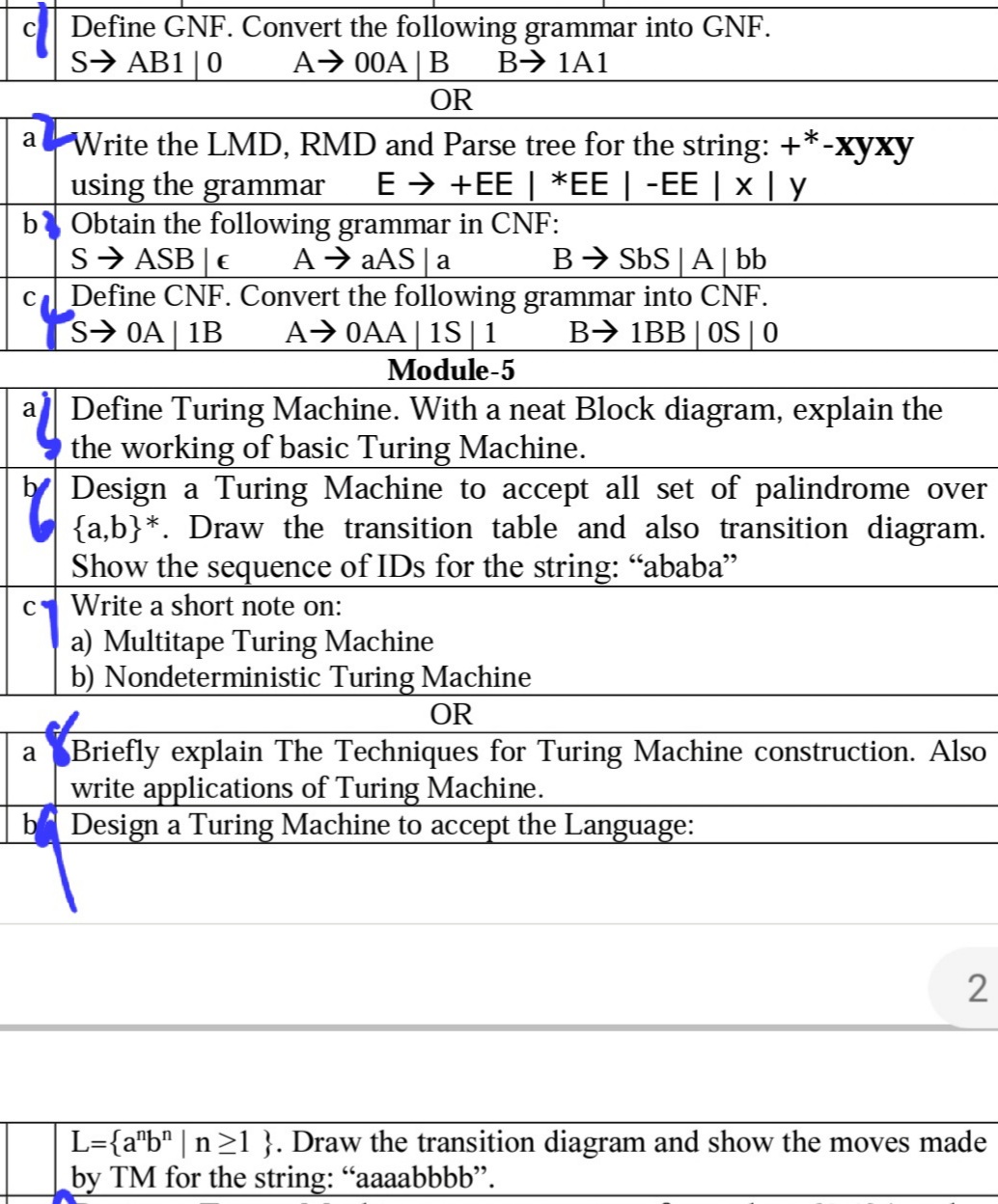Define Turing Machine and explain the working of basic Turing Machine. Design a Turing Machine to accept all palindromes over the alphabet {a,b}. Show the sequence of IDs for the s... Define Turing Machine and explain the working of basic Turing Machine. Design a Turing Machine to accept all palindromes over the alphabet {a,b}. Show the sequence of IDs for the string 'ababa'. Write a short note on Multitape Turing Machine and Nondeterministic Turing Machine.

Understand the Problem
The question is asking to define several concepts related to Turing machines, including designing a Turing machine for specific languages and explaining various techniques and structures used in Turing machines.
Answer
A Turing Machine has an infinite tape, a head, and performs tasks using states and transitions. TMs for palindromes match characters symmetrically. Multi-tape TMs have several tapes, while nondeterministic TMs can explore multiple paths at once.
A Turing Machine (TM) is an abstract computational model consisting of an infinite tape, a tape head, and a set of states governed by a transition function. It can perform read, write, and move operations to compute outputs from inputs effectively.
To design a TM for palindromes over {a, b}, the machine repeatedly checks corresponding characters from the beginning and end of the input string, marking them when they match. If all matches are successful, the string is a palindrome. For 'ababa', the sequence of IDs is:
- (q0, ababa, _)
- (q1, _baba, a)
- (q0, _baba, a)
- (q2, _b_ab, a)
- (q1, _bb_a, a)
- (q0, bb, a)
- ...
A Multi-tape Turing Machine uses multiple tapes that can operate independently, providing more computational power and efficiency. A Nondeterministic Turing Machine can take many computational paths simultaneously, making it theoretically more powerful, though not practically more capable than deterministic machines.
Answer for screen readers
A Turing Machine (TM) is an abstract computational model consisting of an infinite tape, a tape head, and a set of states governed by a transition function. It can perform read, write, and move operations to compute outputs from inputs effectively.
To design a TM for palindromes over {a, b}, the machine repeatedly checks corresponding characters from the beginning and end of the input string, marking them when they match. If all matches are successful, the string is a palindrome. For 'ababa', the sequence of IDs is:
- (q0, ababa, _)
- (q1, _baba, a)
- (q0, _baba, a)
- (q2, _b_ab, a)
- (q1, _bb_a, a)
- (q0, bb, a)
- ...
A Multi-tape Turing Machine uses multiple tapes that can operate independently, providing more computational power and efficiency. A Nondeterministic Turing Machine can take many computational paths simultaneously, making it theoretically more powerful, though not practically more capable than deterministic machines.
More Information
Turing Machines form the basis of defining what can be algorithmically computed. Understanding them helps in prioritizing computational tasks based on complexity and feasibility in practice.
Tips
Incorrectly matching the order of characters can lead to incorrect computation of palindromes. Carefully design state transitions to manage tape movements effectively.
Sources
- Turing Machine in TOC - GeeksforGeeks - geeksforgeeks.org
- Turing machine - Wikipedia - en.wikipedia.org
AI-generated content may contain errors. Please verify critical information